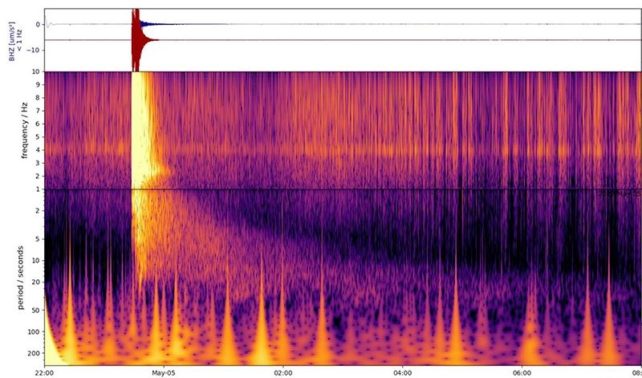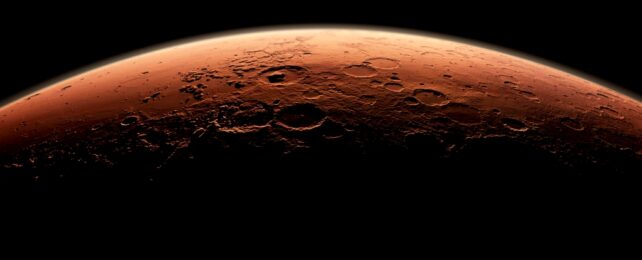The source of a giant quake on Mars has turned out to be a huge surprise.
The quake, detected on 4 May 2022 by NASA's InSight lander, and registered at 4.7 magnitude, was the result of colossal tectonic activity in the Martian crust, according to an international team led by planetary physicist Benjamin Fernando of the University of Oxford in the UK.
This is unexpected, because Mars doesn't have tectonic plates. But the other leading candidate for the quake's source, a giant meteorite impact, was a dead end.
"We still think that Mars doesn't have any active plate tectonics today, so this event was likely caused by the release of stress within Mars' crust," Fernando explains.
"These stresses are the result of billions of years of evolution; including the cooling and shrinking of different parts of the planet at different rates."
InSight spent four years on Mars monitoring the plane's interior before giving up the ghost at the end of 2022.
During that time, it detected hundreds of quakes and tremors; and yes, some of them were absolutely the result of space rocks smashing into the surface of Mars. Other quakes were linked to magmatic activity, revealing that the red planet isn't quite as dead inside as we'd thought.
Fernando and his colleagues wanted to get to the bottom of the biggest quake InSight recorded, named S1222a: was it internally or externally generated?
The seismic data seemed similar to previously identified impact events, so the researchers coordinated a huge international effort, recruiting global space agencies with satellites orbiting Mars.

Other quakes were traced to fresh, easily identified impact craters and blast zones. So if S1222a was the result of an impact, the crater and blast zones left behind should have been large and easy to spot.
In what is thought to be the first time all the missions in Mars' orbit have coordinated, the satellites operated by the European Space Agency, the Chinese National Space Agency, the Indian Space Research Organisation, and the United Arab Emirates Space Agency all scoured the surface of Mars, using their different instrument suites to look for a fresh impact scar large enough to have been the source of S1222a.
The search yielded no such thing. Which leaves, the researchers found, one leading explanation: tectonic movement. This suggests that Mars is likely much more seismically active than we thought it was, too.
Alas, InSight is no longer operational to probe further, although the data it's already collected will give scientists material to mull over for years to come – and future Mars missions and research could help answer some of the questions this new discovery raises.
"We still do not fully understand why some parts of the planet seem to have higher stresses than others, but results like these help us to investigate further," Fernando says.
"One day, this information may help us to understand where it would be safe for humans to live on Mars and where you might want to avoid!"
The research has been published in Geophysical Research Letters.
